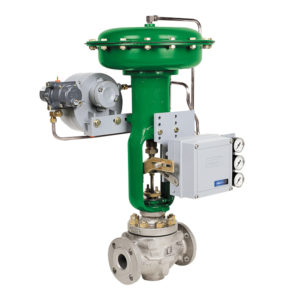 Making your facility plans for 2021? Your control valves have a significant impact on your operations. Having missized valves, or valves that are the right size but haven’t been properly maintained, can cause poor performance and unwanted downtime. Ultimately, these issues can eat into your profits.
Making your facility plans for 2021? Your control valves have a significant impact on your operations. Having missized valves, or valves that are the right size but haven’t been properly maintained, can cause poor performance and unwanted downtime. Ultimately, these issues can eat into your profits.
Here are 5 control valve resources that will help you identify, and fix, control valve issues so you can improve your operations…and boost your bottom line.
1. [Checklist] Is Your Valve Missized?
Missizing is one of the most common problems we see. Missized valves can result in high maintenance costs, poor control, and off-spec product.
Our downloadable checklist helps you identify missized valves.
2. Control Valve Actuator Bench Set Requirements
Do you understand control valve actuator bench set requirements? This is a frequent point of confusion, and misunderstandings can lead to missizing actuators and springs.
In this article from Flow Control, our Director of Engineering Jerry Butz clears up the confusion.
3. Control Valve Shutoff Classification and Allowable Leakage Rates
Even when they’re fully closed, control valves don’t fully shut off the flow of process fluid. Each control valve has an “allowable leakage rate.” Understanding this concept will help you ensure you have the right valves for your applications.
In this article, also from Flow Control, Jerry Butz explains control valve shutoff classifications and allowable leakage rates.
4. Size Control Valve Actuators To Overcome ‘the Force’
You know the issues caused by missized valves, but what about missized actuators? Any piece of equipment is only as good as its weakest component, and even a properly sized control valve won’t do its job if the actuator isn’t right.
In this article from Processing Magazine, Jerry Butz explores the issue of proper actuator sizing for sliding-stem globe valves.
5. Is Your Actuator Corroding on the Inside?
The internal components of actuators — diaphragm plates, actuator travel stops, actuator stems, springs, etc. — aren’t easily accessible for visual inspection, which makes their condition difficult to monitor. As a result, corrosion often goes undetected until it’s in the advanced stages.
This article looks at how the internal components of actuators can become damaged and how you can prevent it from happening.
Have questions about control valves? Our experts can help! Contact us today.

